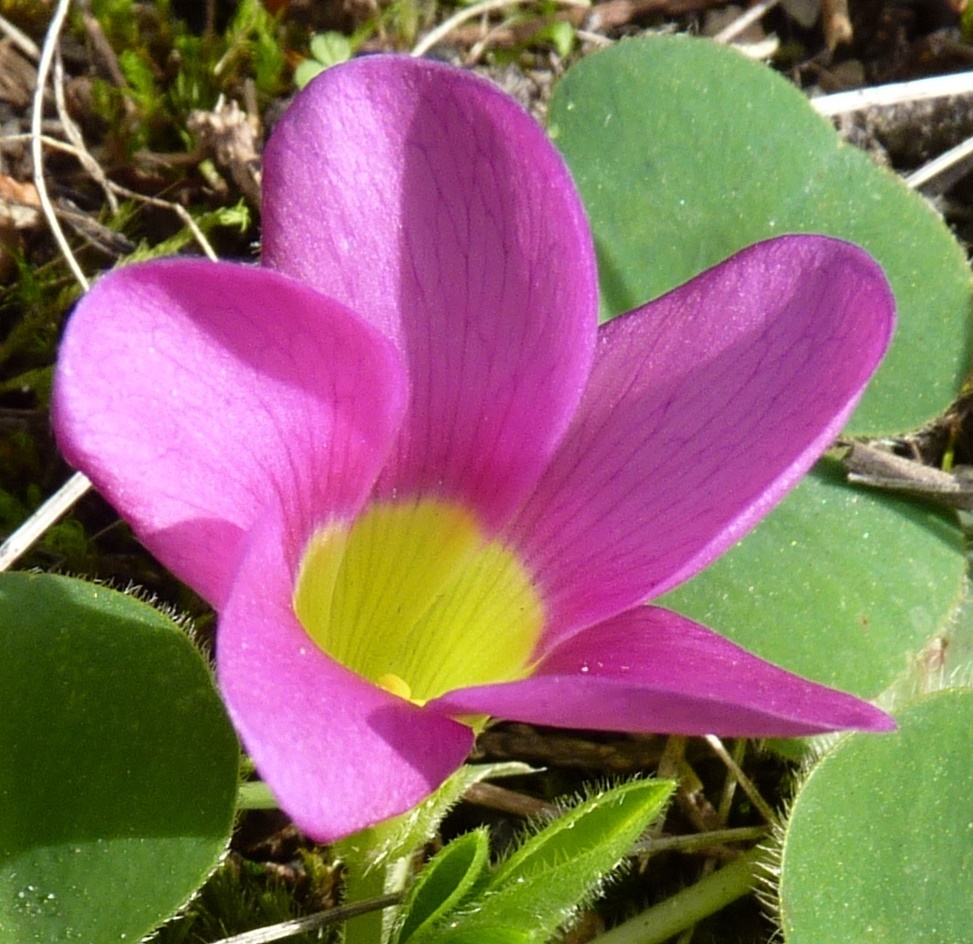
Greco-Latin term referring to plants with acidic leaves (oxalic acid).
Herbs or rarely shrubs. Leaves from basal rosettes or on the stems, mostly palmate and often with 3 leaflets that fold together at night or in cold weather at a point of articulation (pulvinus); stipules usually hairy. Flowers solitary or in clusters. Sepals and petals 5. Stamens 10. Carpels 5, united; styles 5, free.
Grown for the simple flowers and attractive clover-like leaves, mostly in rockeries. O. acetosella L. is the Irish Shamrock.
Many species reproduce by the production of numerous bulbils that are difficult to eradicate; hence the reputation several species have for being almost indestructible garden and environmental weeds. Although there are many naturalised species, few are widely cultivated but many species are available in collections and specialist nurseries.
Among the more common weedy species are as follows: O. corniculata L., Creeping Oxalis (Yellow Wood Sorrel, from Europe, common in parks and gardens, often in lawns, with small yellow flowers with petals 6-7 mm long - there is a purple-leaved variant, var. atropurpurea Planch.; and O. pes-caprae L., Soursob, from S Africa, a common wayside weed with yellow petals 1.5-2.5 cm long.
Oxalis species are difficult to identify. In view of the large number of species in the genus as well as the range of naturalised species and species in specialist collections, a key would not be practical.
Seeds, division and bulbs.
Some species with edible tubers and/or leaves, e.g. O. tuberosa Mol. from the Andes.
Clover-like leaflets.
500 cosmopolitan species, mostly warm-temperate, with centres of distribution in S America and the Cape of S Africa. Australia has 7 native species.
Salter (1944), Ingram (1958, 1959a), Thompson (1982).
Source: (2002). Oxalidaceae. In: . Horticultural Flora of South-eastern Australia. Volume 4. Flowering plants. Dicotyledons. Part 3. The identification of garden and cultivated plants. University of New South Wales Press.
Updated by: Val Stajsic, March 2020
